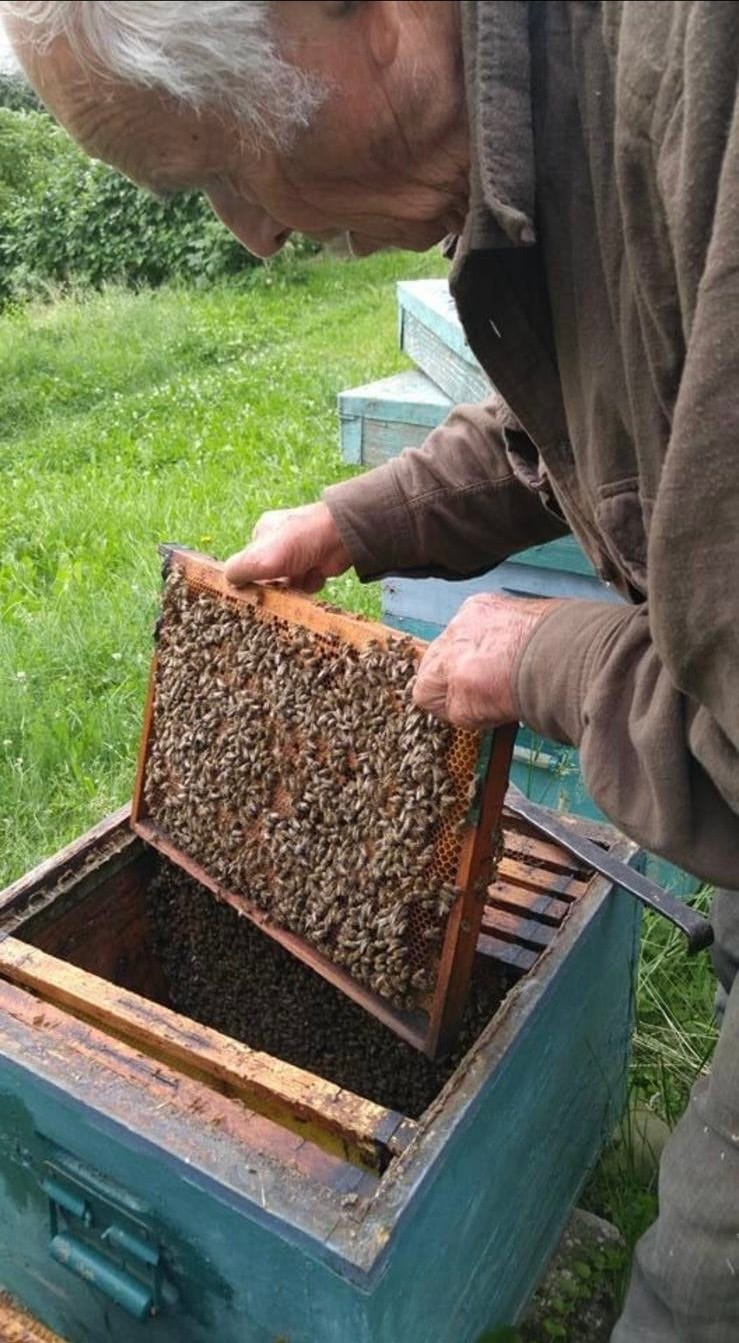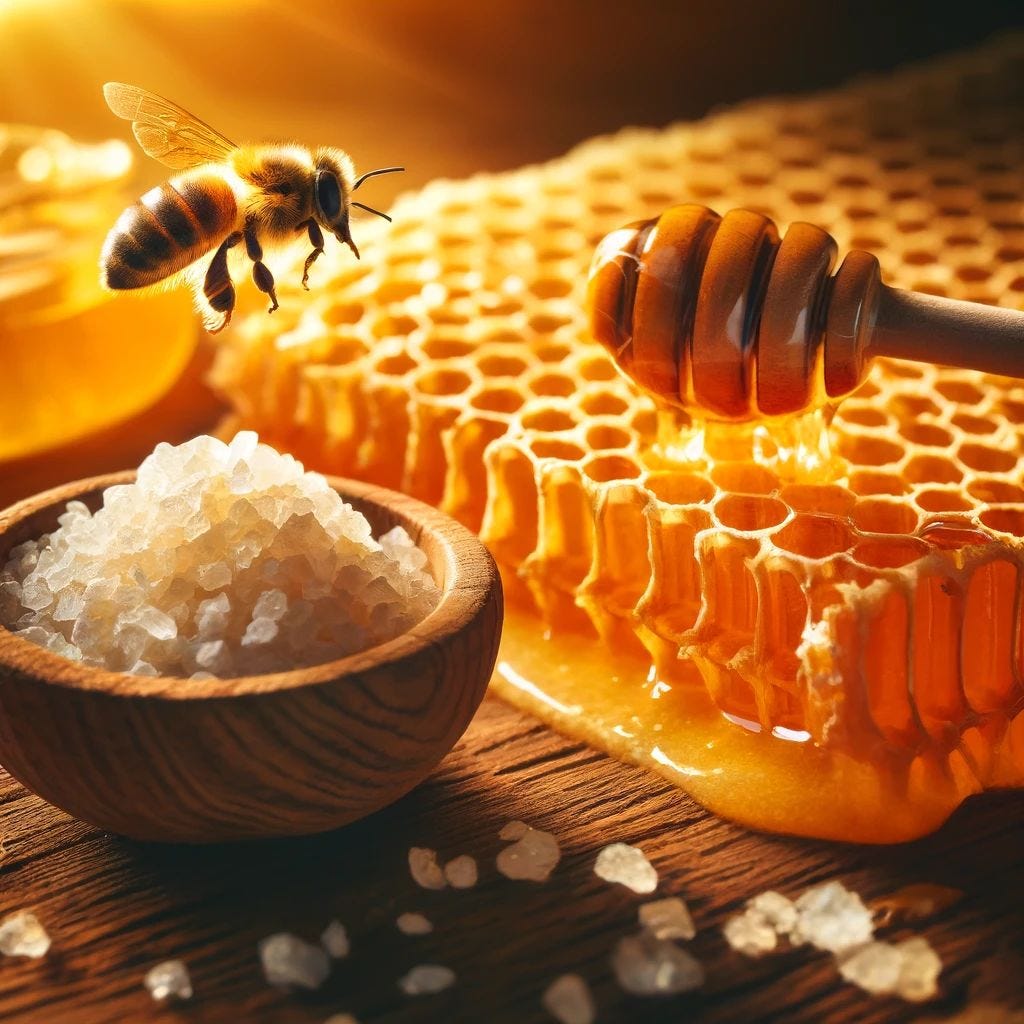In the 1980s, my grandfather—a doctor, herbalist, and beekeeper—often spoke about bees as nature’s greatest engineers. Their hives were not just homes but living networks, self-regulating ecosystems where every action was optimized for efficiency. He saw honey as more than nourishment; it was medicine, preservation, and intelligence wrapped into one substance.
Decades later, we are beginning to grasp the deeper implications of his wisdom. Science is now unlocking the computational and storage potential of natural substances like honey and salt—not just as metaphors for intelligence but as physical components of the next wave of AI systems. As data accelerates beyond human comprehension, nature may hold the key to making AI both more powerful and more sustainable.
The AI-Data Crisis: An Unstoppable Tsunami
Across industries, we are struggling with the sheer volume of data being generated every second. Consider weather forecasting—once an art based on observation, it is now an extreme computational challenge.
Every day, meteorological centers process vast amounts of data from satellites, ocean buoys, and atmospheric sensors. This data must be rapidly analyzed to model storm patterns, predict extreme weather events, and provide accurate forecasts. Yet even with today’s supercomputers, weather models can take hours to generate. By the time they are complete, the weather itself has already changed.
Current forecasting models rely on brute-force computation, requiring vast server farms that consume enormous amounts of energy. The inefficiencies are stark. AI-assisted weather prediction is emerging, but even AI models struggle with the complexity and scale of global climate systems.
This crisis—too much data, too little time—mirrors challenges across other industries, from financial markets to drug discovery. We need a new paradigm for computing—one that doesn’t just process more data faster but does so more intelligently, efficiently, and sustainably.
The Engineering Genius of Bees: A Model for AI
Bees are master engineers, designing and optimizing their hives with an efficiency that rivals the most advanced human-made systems. Their hexagonal honeycomb structure is mathematically perfect, minimizing material use while maximizing storage capacity. The hexagonal pattern allows for structural integrity while using the least amount of wax—demonstrating an intrinsic form of algorithmic efficiency that AI researchers seek to replicate in areas like data storage and computational modeling.
Beyond their architecture, bees operate with decentralized intelligence. Each bee in a colony plays a role in a system that adapts dynamically to environmental changes. Their ability to process information collectively, distribute labor efficiently, and navigate vast distances for resources mirrors the principles behind swarm intelligence in AI—where decentralized systems make optimized decisions without relying on a central processor.
Bee-inspired AI systems are already being explored in robotics, where swarm AI allows drones to collaborate like bees in a hive. These systems could revolutionize supply chain logistics, search-and-rescue missions, and even planetary exploration.
The Moment It All Made Sense
In May 2024, I came across an article about Dr. Hon Weng Chong’s groundbreaking work in neuromorphic computing. His company, Cortical Labs, is pioneering brain-cell-powered chips—computers that merge biological neurons with synthetic processing units.
I contacted Dr. Chong immediately.
For me, it was a moment of realization and connection—a direct thread from my grandfather’s fascination with bees and honey to the future of AI itself. The efficiency of biological systems, the intelligence embedded in nature, and the limitations of modern computing all suddenly aligned.
Honey as the Building Block of Neuromorphic Computing
One of the most exciting frontiers in AI hardware is neuromorphic computing—the development of chips that function like the human brain rather than traditional computers. Researchers at Washington State University recently discovered that honey can be used to build memristors, electronic components that store and process information at the same time, much like human neurons do.
Unlike silicon-based processors, honey-based chips:
Consume less power, mimicking the efficiency of biological brains.
Are biodegradable, solving the e-waste problem of discarded electronics.
Can function like neurons, allowing AI to learn and process information more intuitively.
Dr. Chong’s work takes this concept further. At Cortical Labs, he is building hybrid AI systems that combine biological and synthetic intelligence. His research suggests that human neurons integrated with computing systems could dramatically increase the efficiency and adaptability of AI, allowing machines to learn more like humans do.
If honey-based neuromorphic chips are the future of processing, salt may be the future of storage.
Salt and DNA: The Future of AI Data Storage
DNA is the most efficient storage medium known to humanity. Unlike silicon chips or hard drives, DNA can store vast amounts of information in an incredibly small space—and remain stable for centuries. Scientists have discovered that by encapsulating DNA in salt, it becomes even more resilient, making it a viable solution for long-term, energy-efficient data storage.
The ability to store vast amounts of data in such a compact and stable format could redefine AI memory and long-term information retention. Imagine a world where AI models never "forget" anything, where intelligence is stored in a medium that lasts for centuries instead of decades.
The Bigger Question: Can the Human Brain Keep Up?
Even if we solve AI’s energy and storage problems, the deeper question remains:
Can we, as humans, comprehend the sheer volume of data that AI is processing?
With AI’s rapid acceleration, we may be reaching a point where human cognition itself becomes the bottleneck. The ability to process vast amounts of data in real-time may outpace our capacity to interpret, contextualize, and act upon it effectively.
This is where hybrid AI models, like Dr. Chong’s neuromorphic systems, become crucial. They don’t just process information—they learn, adapt, and integrate human-like reasoning into their decision-making.
Merging Biological and Artificial Intelligence
This brings us back to the deeper question of AI’s role in human evolution. Instead of competing with AI, what if we merge with it?
Dr. Chong’s vision is not to replace the human brain but to augment it, creating AI systems that:
Leverage the efficiency of biological neurons.
Enhance AI with organic learning and adaptation.
Blur the line between wetware (biological computing) and hardware (synthetic computing).
In this model, humans and AI wouldn’t compete—they would collaborate, evolving together in a way that keeps intelligence both scalable and understandable.
Conclusion: The Future of AI is Sweet and Salty
We are at the dawn of a new era—one where AI doesn’t just run on silicon and electricity but on organic substances like honey and salt. This isn’t just a scientific curiosity; it’s a fundamental shift in how we approach computation, storage, and intelligence.
Bees have optimized their hive structures for millions of years, managing complex systems of communication and resource distribution. Now, their honey is powering neuromorphic chips. DNA, which has stored the blueprint of life for billions of years, is poised to become the ultimate AI storage system.
Nature has been running the ultimate R&D lab for billions of years—refining intelligence, optimizing efficiency, and solving complexity without a single server farm.
The future of AI should not just be engineered—it should be cultivated. And, like all great innovations, it’ll be a little sweet, a little salty, and completely unexpected.




